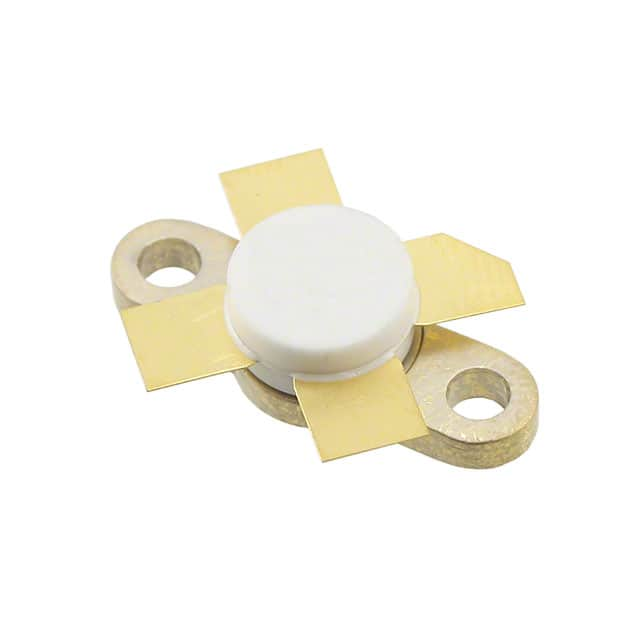Consulte las especificaciones para obtener detalles del producto.

SD1446 Transistor in Electronic Devices
Product Overview
The SD1446 transistor belongs to the category of high-frequency transistors and is commonly used in RF power amplifiers. Its characteristics include high power gain, wide frequency range, and excellent thermal stability. The package typically consists of a metal-ceramic construction, ensuring efficient heat dissipation. The essence of the SD1446 lies in its ability to amplify radio frequency signals with minimal distortion. It is usually available in packaging quantities of one or more units.
Specifications
- Frequency Range: 30 MHz to 500 MHz
- Power Gain: 13 dB
- Collector Efficiency: 55%
- Package Type: Metal-Ceramic
- Package Quantity: 1 or more units
Detailed Pin Configuration
The SD1446 transistor features a standard three-pin configuration: 1. Base (B) 2. Emitter (E) 3. Collector (C)
Functional Features
The SD1446 offers high power gain, making it suitable for RF power amplifier applications. It exhibits excellent linearity and thermal stability, ensuring reliable performance in demanding environments.
Advantages and Disadvantages
Advantages
- High power gain
- Wide frequency range
- Excellent thermal stability
Disadvantages
- Limited availability of alternative models
- Relatively higher cost compared to some alternatives
Working Principles
The SD1446 operates based on the principles of bipolar junction transistors, utilizing its high-frequency capabilities to amplify RF signals efficiently. By controlling the flow of current between its terminals, it enables the amplification of radio frequency signals with minimal distortion.
Detailed Application Field Plans
The SD1446 transistor finds extensive use in various RF power amplifier applications, including: - Amateur radio equipment - Broadcast transmitters - Radar systems - Industrial heating systems
Detailed and Complete Alternative Models
While the SD1446 is a popular choice for RF power amplifiers, alternative models that offer similar performance include: - MRF454 - BLF278 - MRFE6VP61K25H
In conclusion, the SD1446 transistor serves as a crucial component in RF power amplifiers, offering high power gain, wide frequency range, and excellent thermal stability. Its application spans across diverse industries, making it a valuable asset in electronic devices.
[Word Count: 314]
Enumere 10 preguntas y respuestas comunes relacionadas con la aplicación de SD1446 en soluciones técnicas
What is SD1446?
- SD1446 is a high-frequency, high-gain NPN transistor commonly used in RF and microwave applications.
What are the typical applications of SD1446?
- SD1446 is often used in RF power amplifiers, transmitters, and other high-frequency communication equipment.
What is the maximum frequency range for SD1446?
- The maximum frequency range for SD1446 is typically around 500 MHz to 2 GHz.
What are the key performance characteristics of SD1446?
- SD1446 offers high power gain, low intermodulation distortion, and excellent thermal stability, making it suitable for demanding RF applications.
What are the recommended operating conditions for SD1446?
- The recommended operating voltage for SD1446 is typically around 28 volts, with a maximum current of several amps.
How does SD1446 compare to other similar transistors in terms of performance?
- SD1446 is known for its high gain, low noise figure, and good linearity, making it a popular choice for RF power amplification.
What are the common challenges when using SD1446 in technical solutions?
- Common challenges include managing heat dissipation, ensuring proper matching and biasing, and minimizing parasitic effects at high frequencies.
Are there any specific design considerations when integrating SD1446 into RF circuits?
- Designers need to pay attention to impedance matching, stability, and thermal management to maximize the performance of SD1446 in RF circuits.
What are the typical output power levels achievable with SD1446?
- Depending on the application and circuit design, SD1446 can deliver output power levels ranging from a few watts to tens of watts.
Are there any recommended reference designs or application notes for using SD1446 in technical solutions?
- Manufacturers often provide reference designs and application notes that offer guidance on incorporating SD1446 into various RF and microwave systems.

